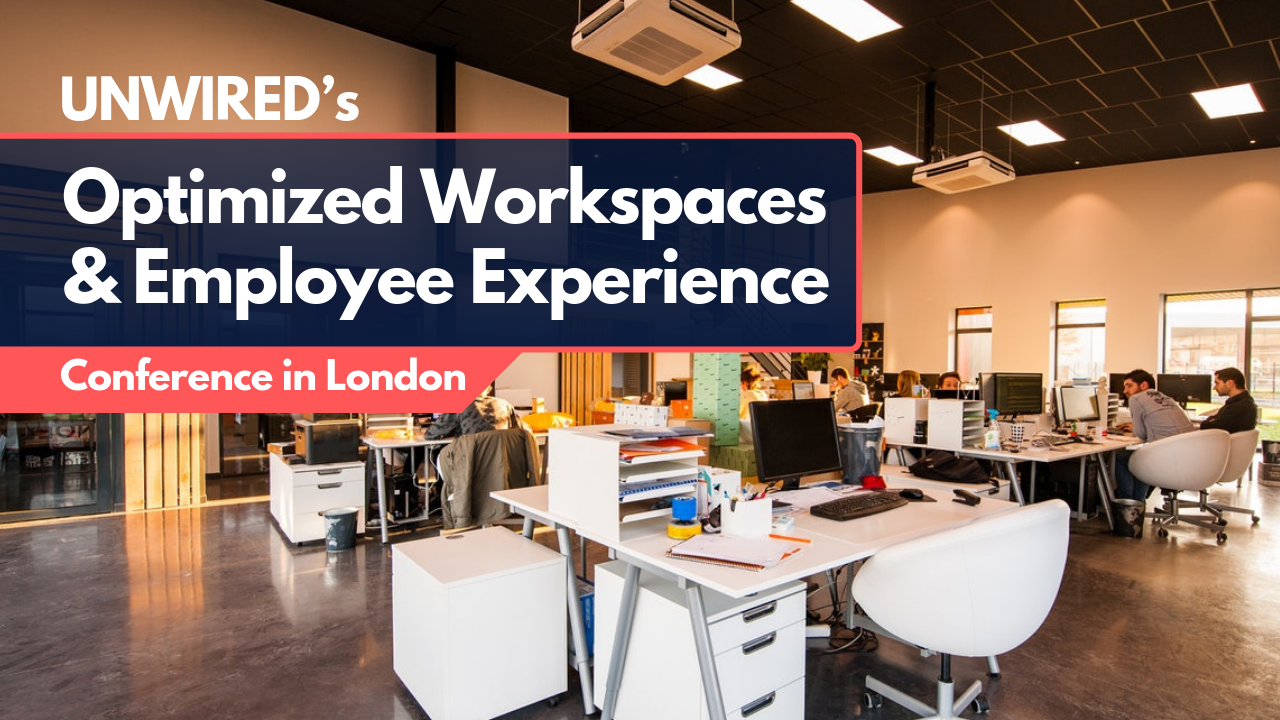- Allwork.Space attended UNWIRED’s Technology and Trends 2019 Conference in London.
- Leading technologists discussed the techno-trends influencing the workplace and how technology helps businesses adapt to changing markets.
- In order to thrive in the ‘second digital revolution’, businesses need to be agile and optimize every aspect of their company for technology — including their workspaces.
UNWIRED’s Technology and Trends 2019 Conference took place on 16th April at Herman Miller in the National Design Centre, London, UK.
Suggested reading: Technology & Trends Conference 2019: How Workplace Tech Trends Are Influencing Workplace Thinking
The event was hosted by Tomi Teikko: futurist, digitalisation influencer and the mastermind behind the Tieto Empathic Building, a digital service for workspaces that focuses on improving employee wellbeing and productivity.
Allwork.Space went along to the conference to listen to leading technologists and thinkers speak about some of the techno-trends infiltrating and influencing the workspace this year, and how businesses can harness this technology to adapt to changing markets.
Fourth to speak was Dr. Kristine Dery, Research Scientist at MIT Sloan, Centre for Information Systems Research (CISR). Dery’s research into the dynamic between technology and the way that people work has been a focus of her publications and teaching for the last 15 years.
Dery and her team are currently investigating the design and management of the workplace to understand how organisations are using digital capabilities internally to create more effective ways of working, and the impact of new ways of engaging with talent in the digital era.
She is a renowned thought leader on emerging digital strategies and offered some fascinating insights into today’s employee experiences and the new and emerging technologies that are shaping the modern workplace today.
Optimised Workspaces are Part of a Bigger Picture
Interestingly, Dery emphasised that simply building new spaces that enable flexible working and facilitate workplace technology is not the standalone answer – to be effective, it has to be part of a wider digital strategy that encompasses all areas, including company culture.
In her talk, Dery cited The Development Bank of Singapore (DBS) as an example of how an organisation can become an industry disrupter by undergoing a major mindset change. DBS is recognised as a global leader in digital transformation and has been named Best Digital Bank twice in recent years by Euromoney.
How did DBS do this? By “acting less like a bank and more like a tech company”.
Dery explained that after appointing a new CEO in 2009, the company embraced what we now refer to as “startup culture”. They provided employees with a great workspace, cutting edge technology and perhaps most importantly, plenty of opportunities for self-directed digital learning and development.
Other Key Takeaways
- Surprisingly, when asked what is most important for success, 56% of businesses said “customer experience” and only 26% said “employee experience”, even though evidence suggests that the latter has a significant impact on the former.
- One of the top issues keeping CEOs up at night is around how they can attract the digital talent their business needs to survive in the long-term. In order to attract the experts they need to enable their business to grow, many companies need to change their culture and model to appeal to Millennials and Gen Z.
- To attract and retain talent, businesses need to take a leaf out of DBS’ book by creating an adaptive work environment that is conducive to learning and development.
- Companies with the best employee experiences see dramatic financial benefits. Of the 279 companies analysed, the top quartile performers in employee experience witnessed the following gains:
– Double the customer satisfaction (industry-adjusted Net Promoter Score, NPS)
– Twice the innovation in terms of percentage of revenues from new products and services
– 25% greater profitability compared to competitors
Other speakers at the conference agreed that in order to compete and indeed thrive in what is being referred to as the second digital revolution, businesses need to be agile and optimize every aspect of their company for technology — including their workspaces.


 Dr. Gleb Tsipursky – The Office Whisperer
Dr. Gleb Tsipursky – The Office Whisperer Nirit Cohen – WorkFutures
Nirit Cohen – WorkFutures Angela Howard – Culture Expert
Angela Howard – Culture Expert Drew Jones – Design & Innovation
Drew Jones – Design & Innovation Jonathan Price – CRE & Flex Expert
Jonathan Price – CRE & Flex Expert











